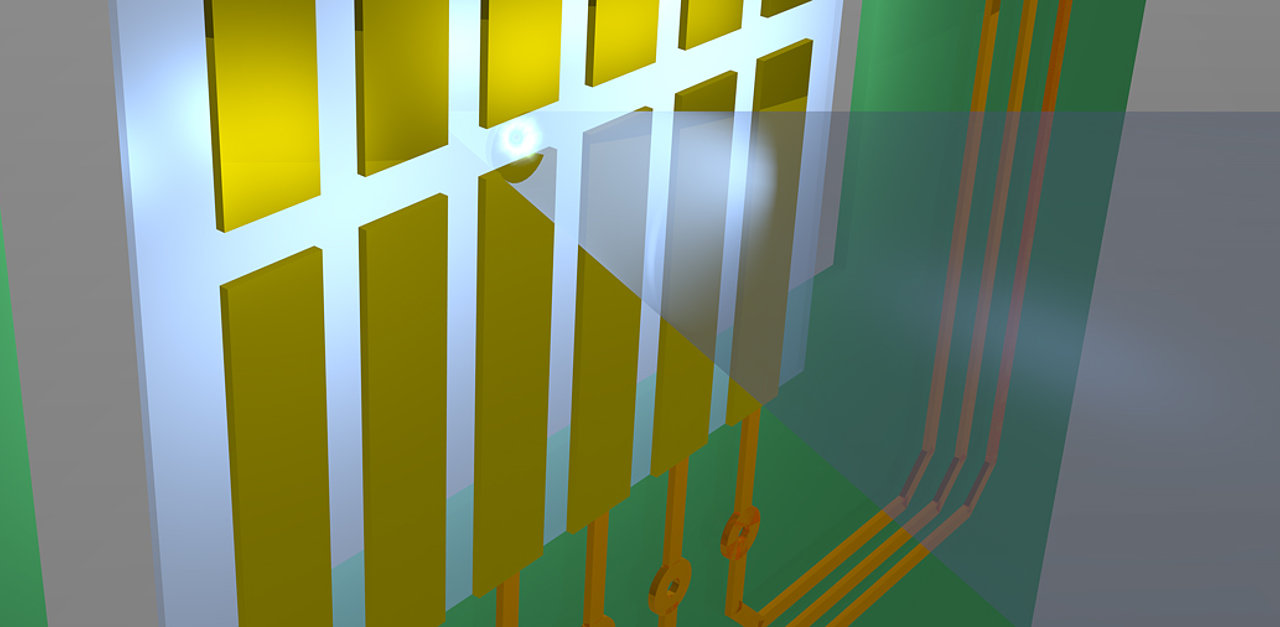The electric field of a light wave oscillates so quickly that measuring its exact time dependence is challenging, especially for extremely short light pulses. Until recently, the only reliable technique for such measurements in the visible spectral region was attosecond streaking, which required complex and expensive vacuum equipment. We demonstrate that field-resolved measurements are possible with a simple solid-state device where highly nonlinear photoinjection of charge carriers enables a high temporal resolution, which we refer to as nonlinear photoconductive sampling (NPS). We show that NPS not only reproduces the results obtained with attosecond streaking, but also offers a much larger dynamic range. For mid-infrared pulses, we also benchmarked NPS against electro-optical sampling and observed an unexpected attosecond-scale delay in photoinjection.
Picture description:
Artist's view of a solid-state device for measuring optical waveforms. An intense injection pulse creates charge carriers within a dielectric medium by a highly nonlinear process. As a result, the medium's optical conductivity experiences a sudden change. Another, much weaker light pulse displaces the photoinjected charge carriers toward the electrodes, this creating an electric dipole within the dielectric. This dipole induces a mirror charge in both electrodes, which is measured for a range of delays between the two laser pulses. We verified that this method measures the electric field of the second (drive) pulse.
Picture: Shawn Sederberg
